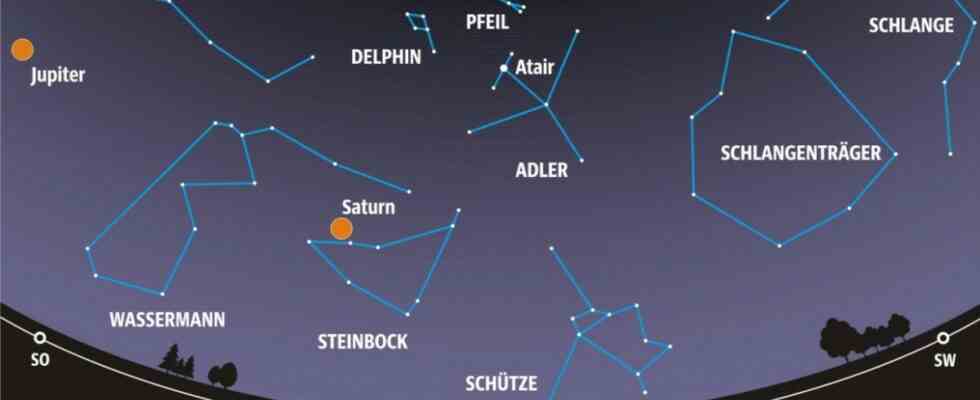The planet is not only exceptional because some can imagine animals there; its size alone: more than a thousand globes could fit in Jupiter. In September he comes particularly close to the earth.
Highlights: No, there are no ducks on Jupiter. Even though a prankster recently tweeted an alleged image of the James Webb telescope, on which the animals swim in the atmosphere of the giant planet. But even without fauna, the celestial body is extraordinary, for example in terms of its size: If you hollowed it out like a pumpkin, there would be room for more than a thousand terrestrial globes. In addition, Jupiter has 318 times the mass of our planet – also the record in the solar system. The giant turns around its axis at breakneck speed, a day on it lasts less than ten hours. Because of this, Jupiter is slightly flattened.
Thousands of kilometers thick, the atmosphere of the king of the planets consists mainly of hydrogen – which exists in liquid form in the deeper layers and even in metallic form due to the high pressure – and helium with admixtures of ammonia and methane. Even a small amateur telescope shows bands of light and dark clouds running parallel in the gas envelope, which bear witness to the turbulent weather on Jupiter. The roughly earth-sized solid core is composed of silicate rock and iron. 79 known moons dance around the planet, four of which appear in binoculars. The next few weeks will bring favorable observation conditions, because on September 26 Jupiter will be in opposition to the Sun and will reach its closest distance to Earth at 591 million kilometers. It currently shines as the brightest “star” in the sky.
Stars and constellations: Although the summer triangle with the stars Atair in the eagle, Deneb in the swan and Vega in the lyre is still high in the firmament, autumn is already moving in the east with the images of Pegasus and Andromeda. Aquarius, Capricorn and Sagittarius shimmer over the southern horizon, with Ophiuchus and Hercules to the west. High in the northwest, the crown blinks, with the Big Dipper glowing below. Cassiopeia and Perseus gather to the northeast, Capella sparkles in the carter far to the north.
Planets, moon, beginning of autumn: Mercury remains invisible in September, Venus disappears from the eastern morning sky at the end of the month. Mars in Taurus rises in the first half of the night, Jupiter in Pisces shows up all night, Saturn in Capricorn sets around four hours after midnight in the middle of the month. The moon’s timetable: first quarter on the 3rd, full moon on the 10th, last quarter on the 17th and new moon on September 25th. On September 23, the sun crosses the celestial equator: At exactly 3:04 a.m., astronomical autumn begins.

